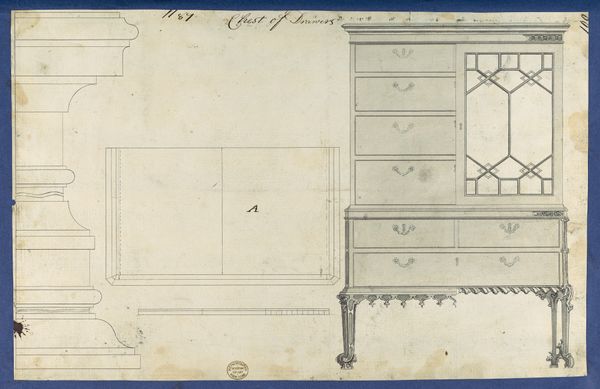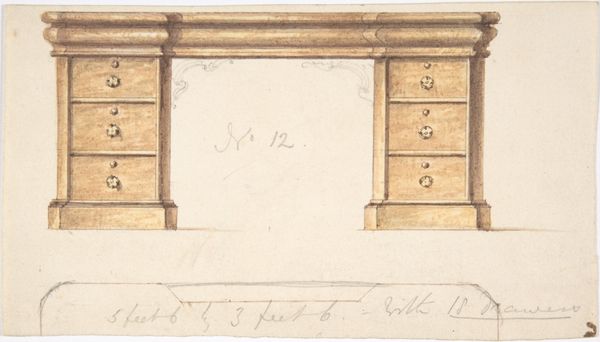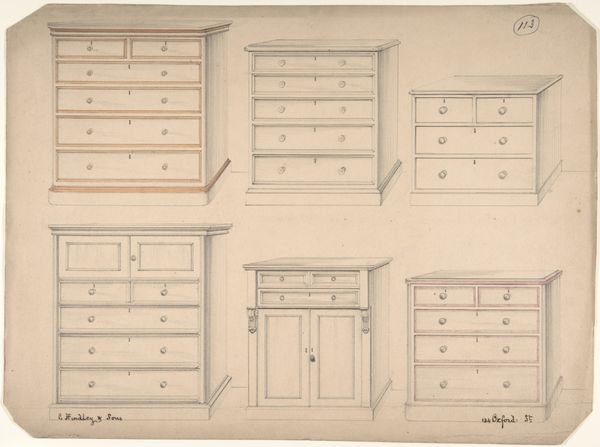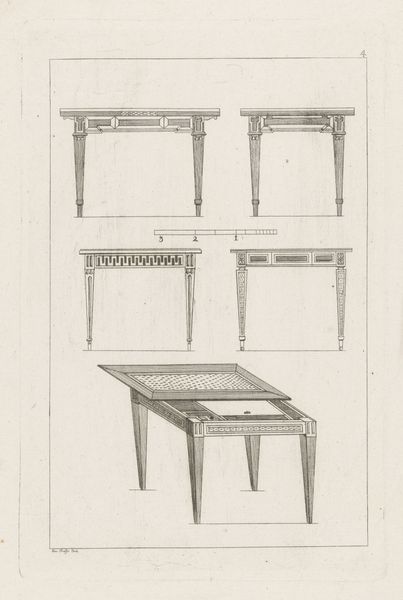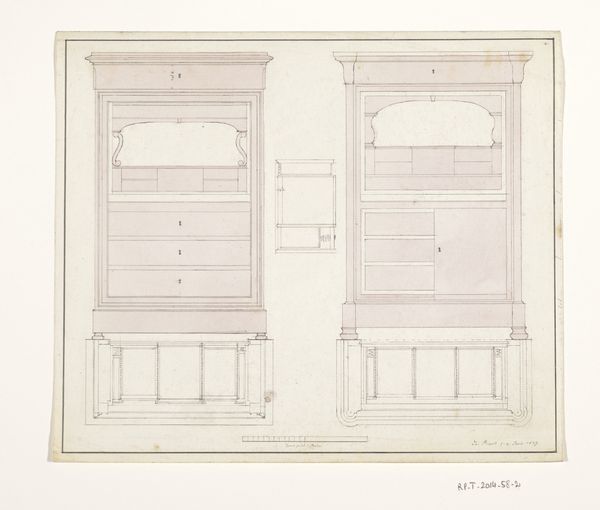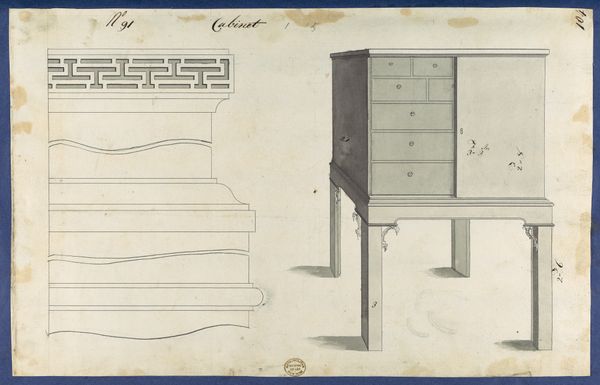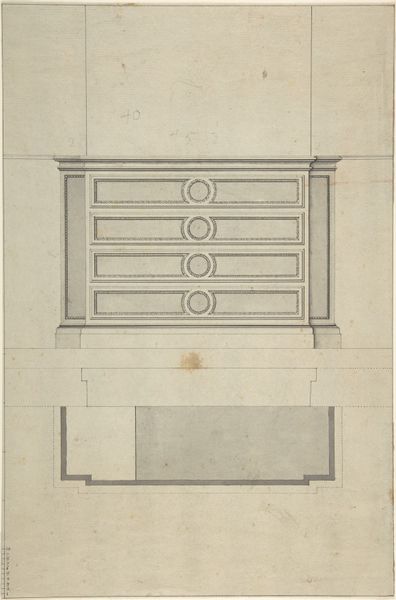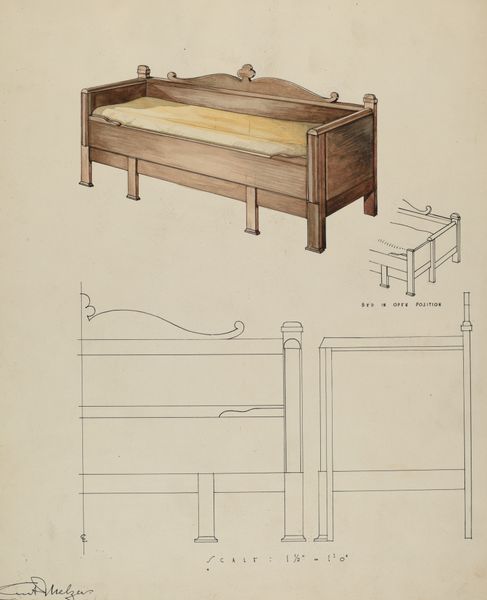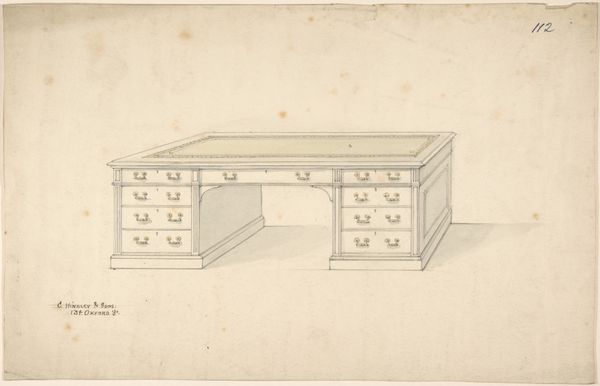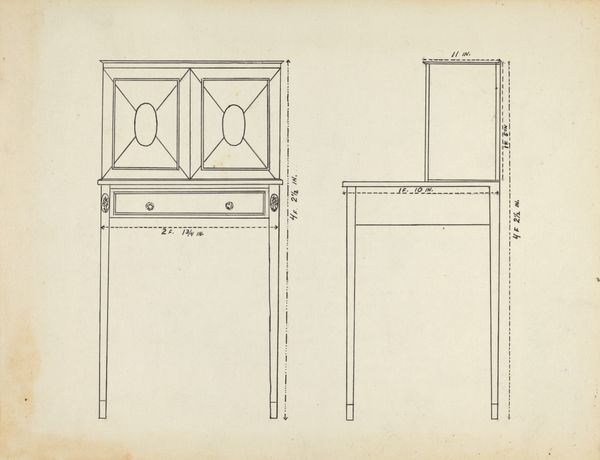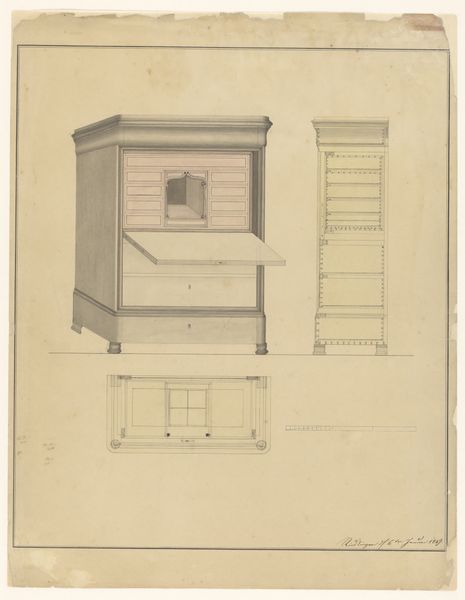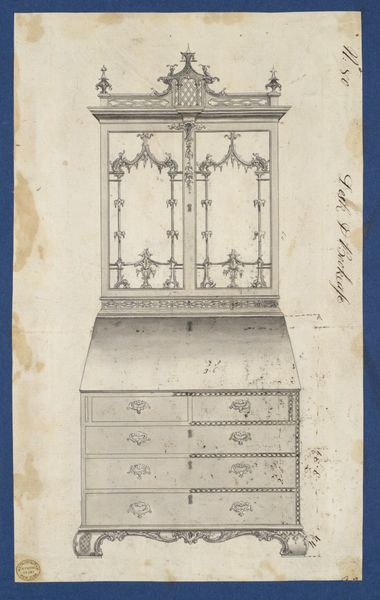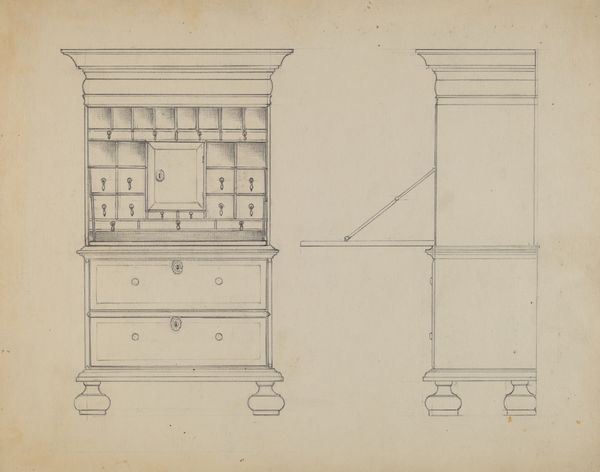
drawing, paper, pencil
#
drawing
#
neoclacissism
#
perspective
#
paper
#
pencil
Dimensions: height 220 mm, width 175 mm
Copyright: Rijks Museum: Open Domain
Curator: This pencil drawing, titled "Ontwerp voor een schrijfmeubel", translates to "Design for a writing desk," and it was crafted by Joachim-Pierre Blank in 1831. Editor: My immediate impression is of functionality elevated to an almost austere elegance. The crisp lines and balanced proportions create a sense of serene order, despite its being a utilitarian object. Curator: Indeed. It exemplifies the Neoclassical style prevalent at the time, evident in the symmetry and emphasis on geometric forms. But this isn’t just about aesthetics; consider the social context. As literacy rates rose, furniture design began reflecting the increasing importance of writing and record-keeping in both domestic and professional spheres. Editor: From a formal perspective, note the meticulous rendering of the different planes, all delineated by the cool reserve of line. See how the top section, almost an exploded view, reiterates the frontality and the layered construction. Even the subtle tonal shifts achieved with pencil add depth and modulation to a potentially flat composition. Curator: The meticulous attention to detail also suggests its function as a presentation piece. These designs served not just as blueprints, but as a way for furniture makers to demonstrate their skill and attract potential clients. This speaks to the rising bourgeois class of the period. Editor: And I wonder what those notations refer to, positioned outside of the object itself? It reads like architectural intent, reinforcing the idea that functional objects contain meaning and symbolic relationships. Curator: Exactly! Consider also the use of perspective; how the artist utilizes lines of convergence to create depth and a realistic impression of space on a flat surface. This realism, though subdued, points to an increasingly pragmatic view of the world that characterized the era. Editor: A synthesis of order and intent, brought out by precise detail in subdued pencil and paper! The clarity suggests a philosophical approach too, aligning with ideas of rationality that echoed at the time. Curator: Ultimately, "Ontwerp voor een schrijfmeubel" shows us not just what people wanted to own, but also something about shifting cultural values related to literacy and aspiration in 19th-century society. Editor: Indeed. The clean and functional forms reflect not only the aesthetic values of Neoclassicism, but more enduring qualities inherent to thoughtful design.
Comments
No comments
Be the first to comment and join the conversation on the ultimate creative platform.

